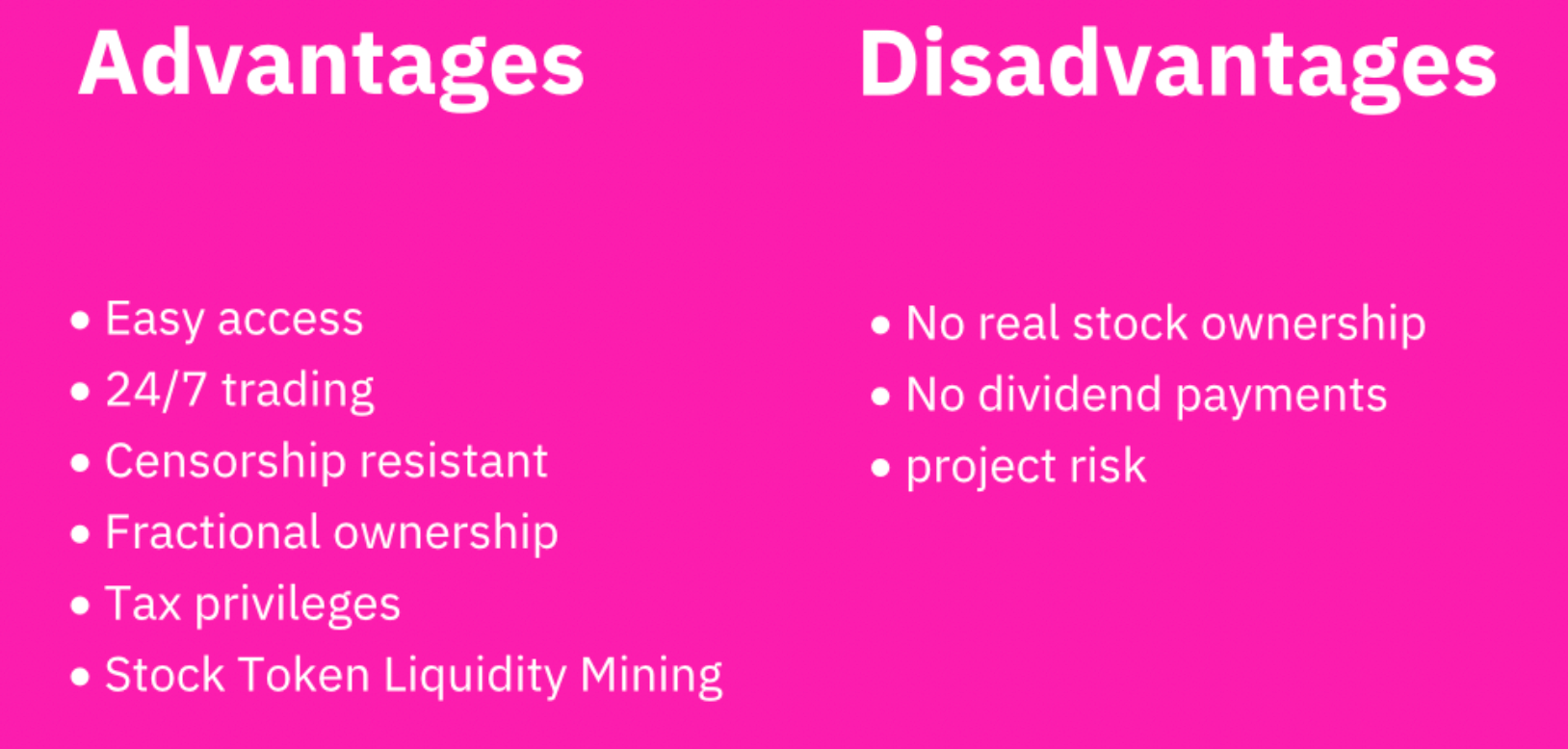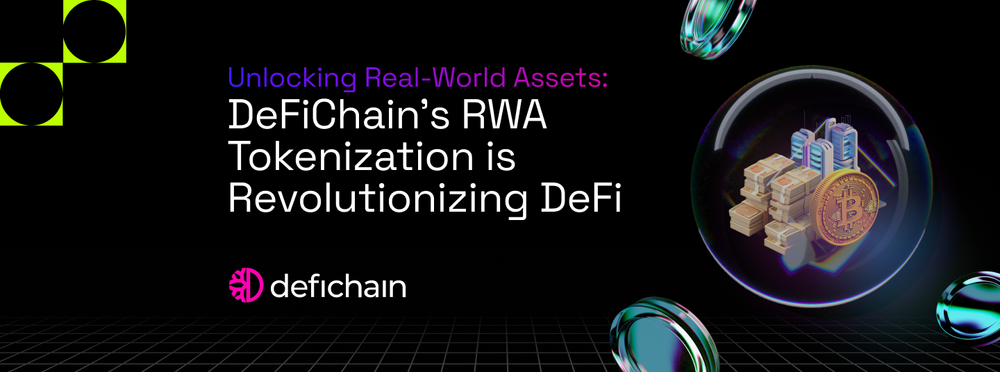Unlocking Real-World Assets: DeFiChain's RWA Tokenization is Revolutionizing DeFi
Real World Assets (RWAs) span a vast array of assets, from physical properties like real estate and infrastructure to intangible assets like intellectual property rights and financial contracts.
Tokenizing these assets involves transforming the ownership (or rights) into a digital token on a blockchain network. This allows for the digital representation of asset ownership or investment, introducing a new era of efficiency and security.
Blockchain technology, along with its smart contract capabilities, provides the foundational framework this revolutionary transition. And DeFiChain provides the comprehensive groundwork for asset tokenization through its robust toolset.
In this article, we explore DeFiChain's toolset to capture the transformative opportunities presented by tokenizing real-world assets and how this innovation can disrupt multiple industries across various sectors.
Decentralized Assets on DeFiChain: Unlocking New Investment Opportunities
Decentralized assets, or dTokens – a form of real world assets (RWAs) – are a unique type of investment vehicle available on the DeFiChain blockchain. While they may share some similarities with traditional assets like stocks, they have some important differences:
- dTokens are not issued by companies: dTokens exist solely on the DeFiChain blockchain platform. Rather than directly tracking the price of an underlying stock from a listed company, dTokens follow a set of variable factors captured through oracles in a truly decentralized manner. This means you are not purchasing the actual stock itself but rather a token derived from these variable data points.
- The foundation of dTokens lies in DeFiChain's decentralized lending system: Users can create (or mint) tokenized representations of assets based on oracle pricing data using DeFiChain's decentralized lending system. The key tool facilitating dToken creation is a Vault, where you can deposit and lock cryptocurrencies as collateral to mint and issue these new digital assets. For example, Tesla’s stock ticker is TSLA, the equivalent dToken on DeFiChain is dTSLA. dTSLA does not represent direct ownership of Tesla shares, but a decentralized asset that tracks factors related to Tesla's performance and market dynamics.
- The minting of dTokens is a user-driven process: The inherent value of each decentralized asset is determined by the collective perception and trading activity around it on DeFiChain's decentralized exchange (DEX). The ability for users to freely exchange dTokens on blockchain networks represents a logical evolution towards a more democratized financial system. By removing centralized authorities and intermediaries, dTokens unlock new frontiers in open and permissionless value exchange.

Creating dTokens: A Decentralized Approach to Asset Generation
One of the core features of DeFiChain is the ability for users to create their own dTokens. Unlike traditional assets issued by companies, dTokens are minted in a truly decentralized way by the DeFiChain community itself.
Any user can create a new dToken, but there's an important prerequisite – the deposit of collateral. To mint a dToken, you must lock cryptocurrencies like DFI, DUSD, dBTC, dETH, or the stablecoins dUSDT, dUSDC, or dEUROC into a DeFiChain Vault. These digital assets act as backing collateral for the newly created dTokens, ensuring they are not created out of thin air.
This collateralization process is a core mechanism that guarantees dTokens are collateralized. For example, if you mint $100 worth of a dToken, you must lock over $150 worth of accepted cryptocurrencies in your Vault. Otherwise, your Vault might get liquidated and its assets auctioned off.
The interest rates for creating dTokens depend on the collateralization ratio you choose. A higher collateralization ratio, such as 500%, will result in lower interest rates. A lower collateralization ratio of 150% will incur higher interest rates. This mirrors traditional lending practices, where lower collateral typically demands higher interest payments.
Through this decentralized process, anyone on DeFiChain can create new digital assets representing a wide range of underlying asset classes and markets. These dTokens are not securities but rather cryptocurrency-backed synthetic assets providing diversified investment exposure.
Understanding dToken Price Dynamics
The minimum collateralization ratio plays a pivotal role in creating new dTokens. Users minting a dToken must ensure their Vault maintains enough collateral above this threshold. If a Vault's collateralization ever drops too low, it will be subject to liquidation, allowing other users to purchase the Vault's collateral assets through an auction process.
However, creating a Vault is not the only way to acquire dTokens. Users can also purchase existing dTokens directly on DeFiChain's decentralized exchange (DEX) from those who have previously minted them in their Vaults.
While minting provides exposure to oracle-derived pricing for that asset, the DEX price for an existing dToken is independent of oracles and solely depends on its market forces. If demand outpaces the supplied amount of a dToken minted from Vaults, its DEX price could rise above the price on external exchanges, presenting arbitrage opportunities.
Advantages and Disadvantages of dTokens
The advantages of dTokens are substantial, with easy accessibility being the most obvious benefit. Investors valuing privacy or seeking a hassle-free alternative to centralized trading can simply download the DeFiChain mobile app and start trading immediately without verification requirements. All you need is an internet-enabled smartphone to unlock 24/7 trading.
Moreover, since dTokens are stored directly on your smartphone, you never have to worry about them being taken away. This self-custody provides full control over your assets.
Another key advantage is the ability to buy fractional amounts of dTokens. Rather than purchasing a whole token, you can acquire as little as 0.1 or less. All dTokens are infinitely divisible and can be instantly transferred globally without intermediaries.
Additionally, you can provide liquidity for dToken trading pairs by depositing your tokens into liquidity pools. This allows you to earn rewards distributed directly from the blockchain while benefiting from potential price appreciation.
However, investing in dTokens also carries risks that should not be underestimated. As a new decentralized platform, it's advisable not to transfer your entire portfolio to dTokens right away. Mitigating project risk by maintaining a diversified portfolio is crucial.

Final Words
The tokenization of real-world assets on DeFiChain represents an innovation that could revolutionize how we interact with and invest in a vast array of asset classes. From real estate and infrastructure to intellectual property and financial contracts, RWA tokenization opens up new frontiers in asset ownership, liquidity, and accessibility.
DeFiChain's comprehensive toolset provides the robust infrastructure to unlock the full potential of this transformation. Through user-driven minting processes and decentralized trading on DEXs, a new era of open, transparent, and democratized asset markets is emerging.
Ultimately, the tokenization of real-world assets represents a paradigm shift in how we perceive and interact with value itself. As this ecosystem continues to evolve and mature, we can expect to witness profound changes across multiple industries and asset classes. DeFiChain stands at the forefront of this revolution, empowering individuals to participate in and shape this new financial frontier.

